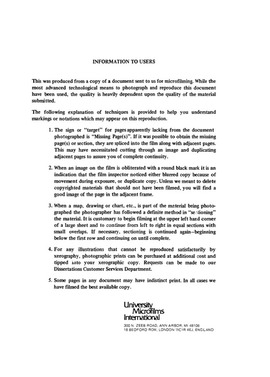| dc.contributor.author | Ellis, Richard Stewart, | en_US |
| dc.date.accessioned | 2013-08-16T12:28:04Z | |
| dc.date.available | 2013-08-16T12:28:04Z | |
| dc.date.issued | 1980 | en_US |
| dc.identifier.uri | https://hdl.handle.net/11244/4734 | |
| dc.description.abstract | This is a study of how one community has adapted to its natural, social and political environments, within its region and, through the three successive nations which have held it in hegemony, to the capitalist world economic system. | en_US |
| dc.description.abstract | Santa Cruz and its region were peripheral to the world system for the first century of their existence, providing few products or markets, instead serving to maintain the Spanish frontier against the possible expansion of France. In the 1800s the region became more firmly integrated in the world system but largely through the United States, first through trade, then, after 1846, through conquest. Particularly since the 1880s and the coming of the railroads a variety of raw materials, particularly mining and forest products, have been extracted, land has been used to raise sheep and cattle, and, until the depression, labor was exported to other western states. The region today has begun to undergo modernization, but of the dependent sort characteristic of regions which are on the semi-periphery of the modern world system, and shows many of the hallmarks such as clientelist politics, high levels of welfare and dependence on public sector or on non-industrial private sector employment, particularly in tourism. | en_US |
| dc.description.abstract | After establishing the problem and a discussion of the natural and historical settings, each of four institutional spheres, church, education, livelihood, and politics, is investigated to determine what changes have taken place since 1695 in the formal levels of the institution. In each case, however, the members of the local community have adapted the formal institutions to local needs and patterns through various noncorporate and informal means, particularly coalitions. | en_US |
| dc.description.abstract | In conclusion, there is a summary and a comparative discussion of two key issues in the recent history of Santa Cruz, the type of leader called a patron, and the nature of community survival. Finally, happenings since the field research concluded in 1973 are reported which point to certain trends in those events. | en_US |
| dc.description.abstract | Santa Cruz was founded in 1695 as the administrative seat for the northern-most reaches of New Spain in the province of New Mexico. It passed to the Republic of Mexico in 1821, but had begun to decline in importance by the 1830s so that with conquest by the United States in 1846 Santa Cruz was just another of the large number of villages dotting the river courses of that region. Today it survives as a largely unincorporated "neighborhood" of Espanola, the regional trade center that grew up around the Denver and Rio Grande railhead that was established in 1880. | en_US |
| dc.format.extent | vii, 240 leaves : | en_US |
| dc.subject | Anthropology, Cultural. | en_US |
| dc.title | Santa Cruz : | en_US |
| dc.type | Thesis | en_US |
| dc.thesis.degree | Ph.D. | en_US |
| dc.thesis.degreeDiscipline | Department of Anthropology | en_US |
| dc.note | Source: Dissertation Abstracts International, Volume: 41-03, Section: A, page: 1118. | en_US |
| ou.identifier | (UMI)AAI8019123 | en_US |
| ou.group | College of Arts and Sciences::Department of Anthropology | |
